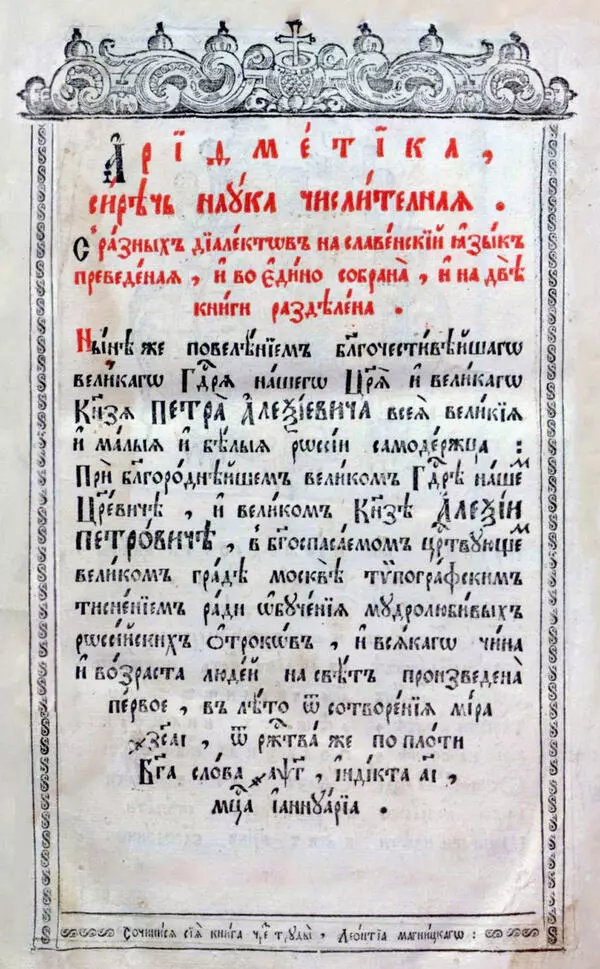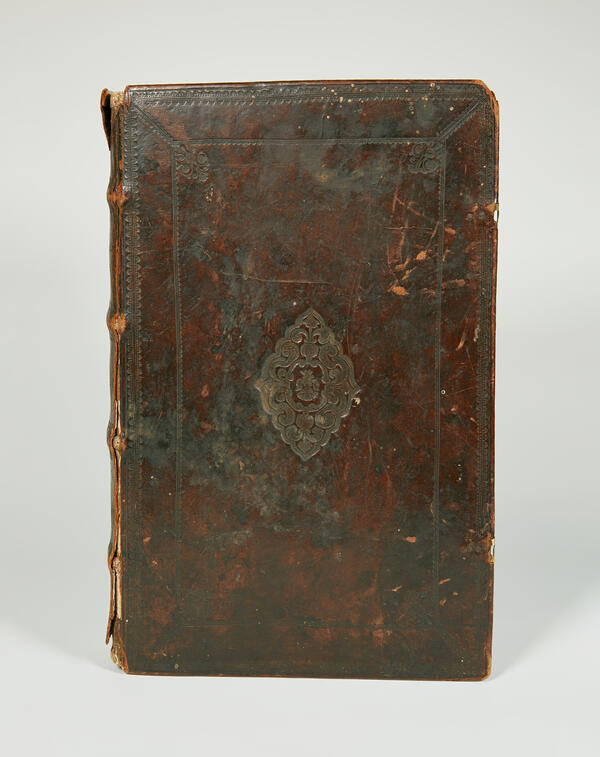Magnitsky’s textbook “Arithmetic” is the first printed course in mathematics in the early Slavonic language (that was based on the Church Slavonic language). The book that was compiled by Leonty Filippovich Magnitsky and published in 1703 played an important role in the history of teaching mathematics in Russia. Several copies of the original edition are kept in the Department of Rare Books and Manuscripts of the Moscow University Library.
The first Russian textbook on mathematics is unique both in its history and its content; it examines five operations: numbering, addition, subtraction, multiplication, and division. The book is distinguished by its fresh and consistent presentation of learning material. Each new rule begins with a simple, most often everyday example, followed by its general formula and many different tasks, almost always having some practical application. In addition, each action is accompanied by a verification rule.
Magnitsky’s arithmetic reflected the progressive principles of Peter the Great’s time; he managed to turn his book into a kind of encyclopedia of mathematical knowledge that was highly needed to meet the practical needs of the rapidly developing Russian state.
Leonty Magnitsky managed to create an original book on which entire generations of mathematically educated Russian people, technicians, sailors, and scientists were brought up. At the same time, “Arithmetic” is not a body of applied knowledge or a simple reference book for practical needs; first, it is a broad, general educational mathematical course that combines deep theoretical training with a constant use of practice. Satisfying the requirements that could be presented to a mathematics textbook in Russia in the first half of the 18th century, “L. Magnitsky’s Arithmetic” was widely used for a long time and did not fall out of use until the mid-1750s. Entire generations of Russian physicists and mathematicians used it as a textbook. Based on its content, one can get an idea of the direction and nature of teaching arithmetic in Russia in the first half of the 18th century and the quality of knowledge delivered by this teaching.
Perhaps a similar textbook was used by the owner of the Nevyansk plant, Akinfiy Nikitich Demidov, an educated man who spent his entire life striving for new knowledge. It is known that his rich book collection included one copy of Magnitsky’s “Arithmetic”.






